
Wetenschap
$ 29.000 voor een gemiddelde gebruikte auto? Aanstaande kopers zijn verbijsterd
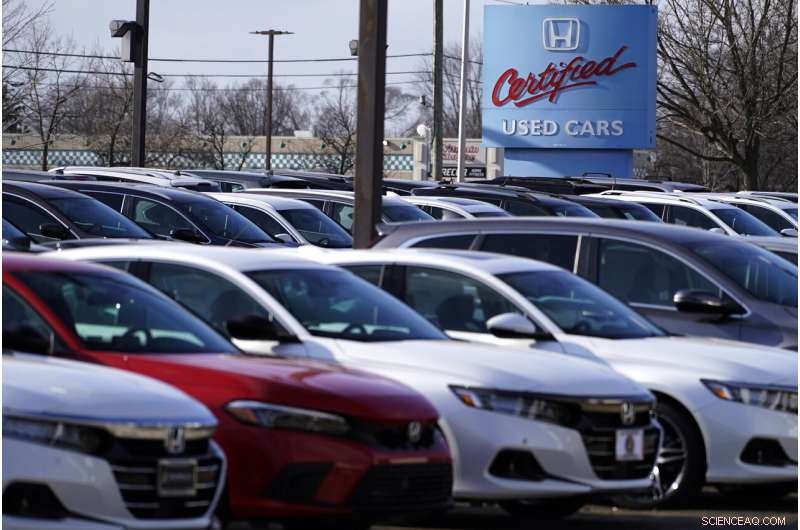
Buiten de door Honda gecertificeerde dealer voor gebruikte auto's in Schaumburg, Illinois, donderdag 16 december 2021, is een dealerbord te zien. De prijzen voor gebruikte auto's zijn zo hoog, zo snel, gestegen dat kopers steeds meer uit de markt worden geprijsd. Krediet:AP Photo/Nam Y. Huh
Een paar maanden geleden bracht een vrouw een bezoek aan de parkeerplaats van Jeff Schrier in Omaha, Nebraska. Ze had een krap budget, zei ze, en was wanhopig op zoek naar een auto om naar haar werk te pendelen.
Ze kreeg drie auto's te zien die tegen haar limiet waren geprijsd, ongeveer $ 7.500. Schrier zei dat de vrouw stomverbaasd was.
"'Is dat wat ik krijg voor $ 7.500?'", herinnert hij zich dat ze zei. De voertuigen hadden veel meer leeftijd of kilometers op de teller dan ze had verwacht voor iets dat een auto zou vervangen die total loss was geraakt bij een ongeval.
De vrouw koos uiteindelijk voor een Toyota Scion uit 2013 met maar liefst 160.000 mijl op de teller. Schrier weet niet zeker of hij winst heeft gemaakt met de deal. "We hebben haar net geholpen," zei hij.
Aangezien de prijzen voor gebruikte voertuigen elk schijnbaar rationeel niveau overschrijden, is dit het soort scenario dat zich afspeelt bij veel autodealers in het hele land. De prijzen zijn zo hoog, zo snel, gestegen dat kopers steeds meer uit de markt worden geprijsd.
Bedenk dat de gemiddelde prijs van een gebruikt voertuig in de Verenigde Staten in november volgens Edmunds.com $ 29.011 was, een duizelingwekkende 39% meer dan slechts 12 maanden eerder. En voor het eerst dat iemand zich kan herinneren, heeft meer dan de helft van de Amerikaanse huishoudens minder inkomen dan nodig wordt geacht om de gemiddeld geprijsde gebruikte auto te kopen.
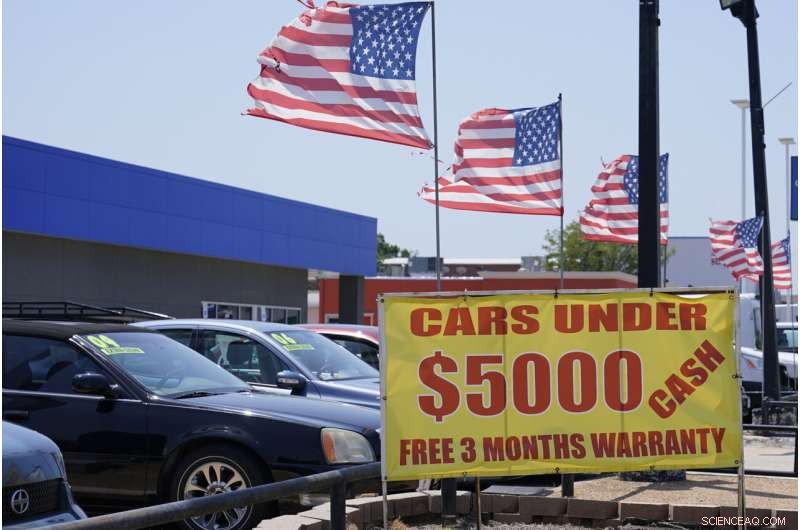
Gebruikte auto's te koop zijn te zien op donderdag 24 juni 2021 in Oklahoma City. De prijzen voor gebruikte auto's zijn zo hoog, zo snel, gestegen dat kopers steeds meer uit de markt worden geprijsd. Krediet:AP Photo/Sue Ogrocki
De dagen dat zowat iedereen met een vast inkomen naar een autopark kon dwalen en een betrouwbare auto van het laatste model kon kopen of de eerste auto van hun kind kon kopen voor een paar duizend dollar, is in wezen verdwenen.
"Ik heb nog nooit iets gezien dat in de buurt komt - het is waanzin", zei Schrier, die al 35 jaar auto's verkoopt. "Het is op dit moment voor zoveel mensen behoorlijk frustrerend."
Toen de regering rapporteerde dat de consumenteninflatie in de 12 maanden die eindigden in november met 6,8% steeg - de scherpste sprong in bijna 40 jaar - was de grootste factor, afgezien van energie, gebruikte voertuigen. And while the rate of increase is slowing, most experts say the inflated vehicle prices aren't likely to ease for the foreseeable future.
The blame can be traced directly to the pandemic's eruption in March of last year. Auto plants suspended production to try to slow the virus' spread. As sales of new vehicles sank, fewer people traded in used cars and trucks. At the same time, demand for laptops and monitors from people stuck at home led semiconductor makers to shift production from autos, which depend on such chips, to consumer electronics.
When a swifter-than-expected economic rebound boosted demand for vehicles, auto plants tried to restore full production. But chip makers couldn't respond fast enough. And rental car companies and other fleet buyers, unable to acquire new vehicles, stopped off-loading older ones, thereby compounding the shortage of used vehicles.
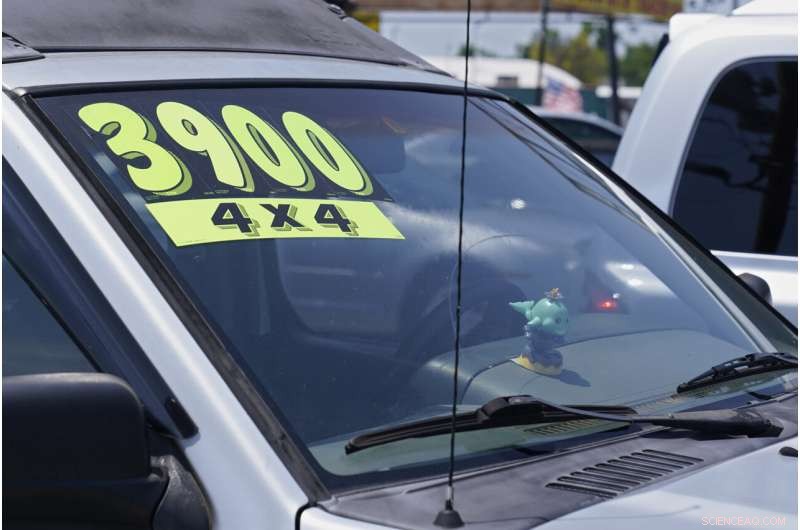
Used cars for sale are on display Thursday, June 24, 2021, in Oklahoma City. Prices for used cars have soared so high, so fast, that buyers are being increasingly priced out of the market. Credit:AP Photo/Sue Ogrocki
Bleak as the market is for used-car buyers, the computer chip shortage has also driven new-vehicle prices higher. The average new vehicle, Edmunds.com says, is edging toward $46,000.
Even so, prices of used cars are likely to edge closer to new ones. Since the pandemic started, used vehicle prices have jumped 42%—more than double the increase for new ones. Last month, the average used vehicle price was 63% of the average new vehicle cost. Before the pandemic, it was 54%.
At this point, Schrier has to tell lower-income buyers that he has very few used vehicles to sell them.
"What used to be a $5,000 car," he said, "is now $8,000. What used to be $8,000 is now $11,000 or $12,000."
Including taxes, fees, a 10% down payment, and an interest rate of around 7.5%, the average used vehicle now costs $520 a month, even when financed for the average of nearly six years, Edmunds calculated.

This June 24, 2021 photo shows used cars for sale in Oklahoma City. Prices for used cars have soared so high, so fast, that buyers are being increasingly priced out of the market. Credit:AP Photo/Sue Ogrocki
Ivan Drury, a senior manager at Edmunds, said that while he doesn't track used vehicle prices relative to household income, he thinks November marked a record "in the worst way possible for affordability."
Monthly payments for the average used vehicle, he noted, were $413 two years ago, $382 five years ago and $365 a decade ago. The November average payment of $500-plus for a used vehicle, Drury said, is about the average that was needed five years ago for a brand-new vehicle.
Used vehicle prices are so high that Karl Hogan of Canonsburg, Pennsylvania, near Pittsburgh, was able last month to quickly sell his 2007 Toyota Tacoma small pickup truck, with more than 170,000 miles on it. Even with the vehicle's age and mileage, a man from Ohio forked over $6,500 for it.
Hogan didn't have to budge from the asking price. When some would-be buyers offered him less money, he told them:"I've got 12 other guys behind you."
A week before the sale, when he bought his new Tacoma, Hogan had been on the other side of the equation. The dealer wouldn't budge from his $38,000 sticker price.
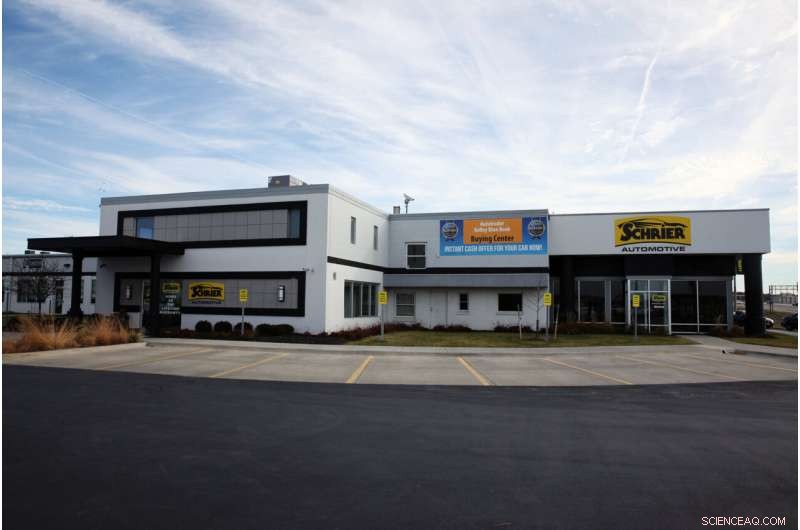
Schrier Automotive in Omaha, Nebraska, sits with a partially empty sales lot caused by high demand for cars on Monday, Nov. 29, 2021. Prices for used cars have soared so high, so fast, that buyers are being increasingly priced out of the market. AP Photo/Grant Schulte)
"If I didn't take it," Hogan said, "there were three people waiting. I couldn't get any off, but I wanted a new truck."
David Paris, a senior manager at J.D. Power, noted that used vehicle prices are directly tied to the cost of new ones. Though some automakers report that the computer chip supply is gradually improving, prices paid by dealers at used vehicle auctions kept rising through November, Paris said.
"We're not seeing any softening in prices, which is extremely rare for this time of the year," he said.
New vehicle dealers have about 1 million vehicles available nationally—scarcely one-third of the normal supply, Paris said. And the vast majority have already been sold.
Given pent-up demand from consumers, prices for new vehicles are expected to remain historically high until the supply returns to around 2 million or 2.5 million and automakers resume discounting, which could take well into 2023. Once new vehicle prices do ease, the pressure on used-vehicle prices would eventually follow.
-
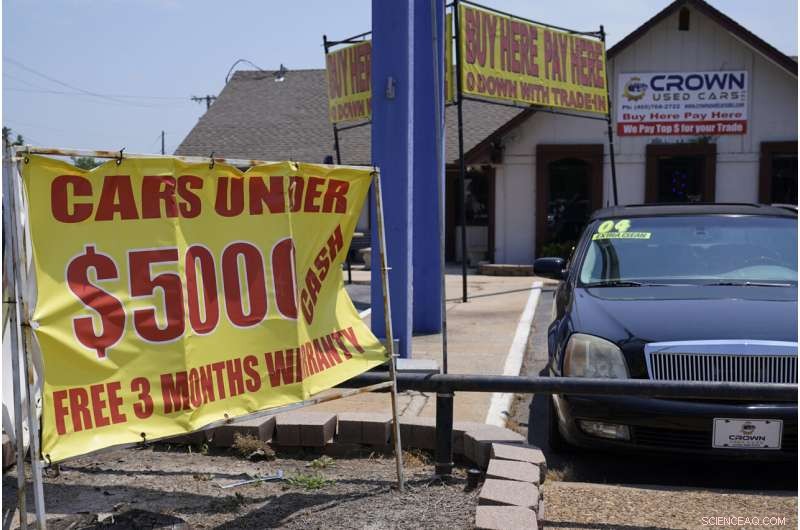
Used cars for sale are pictured Thursday, June 24, 2021, in Oklahoma City. Prices for used cars have soared so high, so fast, that buyers are being increasingly priced out of the market. Credit:AP Photo/Sue Ogrocki
-
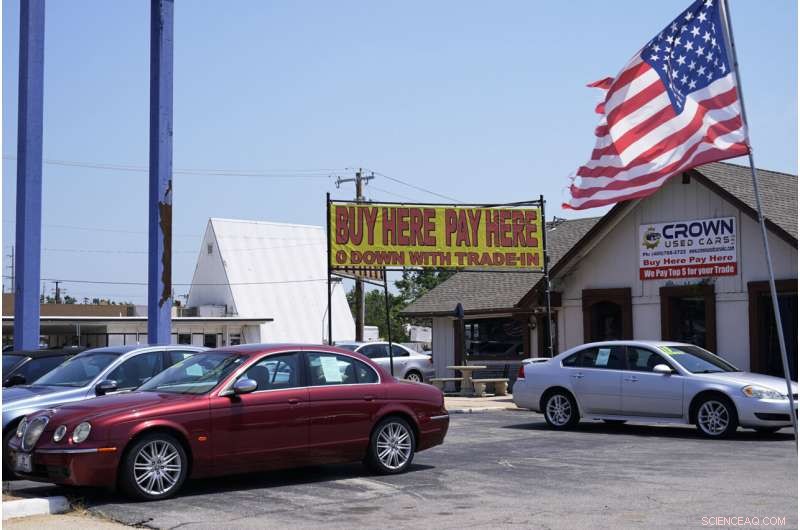
Used cars for sale are pictured Thursday, June 24, 2021, in Oklahoma City. Prices for used cars have soared so high, so fast, that buyers are being increasingly priced out of the market. Credit:AP Photo/Sue Ogrocki
Yet even after that, the availability of vehicles will be tight because traditional sources of used vehicles—autos turned in from leases and trade-ins or sold by rental companies—have essentially dried up.
For the past decade, cars returning from two- and three-year leases were a leading source of almost-new used vehicles. But that was when more than one-third of U.S. new vehicle sales were leases, a figure now down to 22%, said Edmunds' Drury. Because there aren't many new autos, people with expiring leases are often buying those cars once their leases end.
Rental companies, another key source of late-model used cars, can't buy new ones now and are holding the ones they have. Some rental companies are even buying used vehicles. Given all those factors, Paris expects the shortage of used cars to worsen through 2024.
Among the few consumers who stand to benefit are those who want to sell a used car and don't necessarily need to replace it. The average trade-in value in October, Paris said, was $9,000—twice what it was a year earlier.
But for people who have no vehicles to trade in and only modest incomes, the options are few to none. J.D. Power's Paris says that if they can afford it, buyers should consider a new vehicle. He recently managed to get a couple thousand dollars whacked off the sticker price on a new Ram pickup, though he had to travel from the Washington, D.C., area to Philadelphia to reach a willing dealer he had located by searching internet forums.
"If you look hard enough and are willing to wait and travel," he said, "you can find deals across most brands."
 Lichtgestuurd stroomtransport door geladen atomen voor het eerst gedemonstreerd
Lichtgestuurd stroomtransport door geladen atomen voor het eerst gedemonstreerd NIST geeft eerste standaardreferentiemateriaal uit voor kwantitatieve analyse van glycanen
NIST geeft eerste standaardreferentiemateriaal uit voor kwantitatieve analyse van glycanen Hoe de elektronen-dotstructuur te bepalen
Hoe de elektronen-dotstructuur te bepalen  Onderzoekers optimaliseren additive manufacturing op moleculair niveau
Onderzoekers optimaliseren additive manufacturing op moleculair niveau Bij veldproeven, apparaat haalt water uit woestijnlucht
Bij veldproeven, apparaat haalt water uit woestijnlucht
 De ecologische voetafdruk van een volledig Engels ontbijt, en hoe het te verminderen?
De ecologische voetafdruk van een volledig Engels ontbijt, en hoe het te verminderen? Certificering van duurzame gewassen helpt mens en natuur, maar het zou meer kunnen doen om de armste boeren ter wereld te helpen
Certificering van duurzame gewassen helpt mens en natuur, maar het zou meer kunnen doen om de armste boeren ter wereld te helpen Hoe de VS de overgang van steenkool kunnen versnellen om belangrijke klimaatdoelen te halen
Hoe de VS de overgang van steenkool kunnen versnellen om belangrijke klimaatdoelen te halen IJzige landing:landingsbaan geopend op bevroren Amerikaans meer
IJzige landing:landingsbaan geopend op bevroren Amerikaans meer Wat eronder ligt:Vulkanische geheimen onthuld
Wat eronder ligt:Vulkanische geheimen onthuld
Hoofdlijnen
- 5 manieren om geluk te maximaliseren
- Wetenschappers ontcijferen het genoom van herfstlegerworm, mottenplaag die Afrika binnendringt
- Lijst met toepassingen van elektroforese
- How Do Ions Cross the Lipid Bilayer of the Cell Membrane?
- Ecologie: definitie, soorten, belang en voorbeelden
- Stille code van nucleotiden, geen aminozuren, bepaalt functies van vitale eiwitten
- Wat kunnen zebravissen ons leren over hoe we overleven als we worden geconfronteerd met mutaties?
- Onderzoek naar schapengenen kan helpen om gezondere dieren te fokken
- 10 misvattingen over de griep
- Facebook gaat regels voor politieke advertenties aanscherpen voor verkiezingen van 2019

- Project past basistechnologie aan om patiënten in Afrika een stem te geven

- Augmented reality-app voegt interactieve verbeteringen toe aan wetenschappelijke posters, presentaties
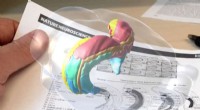
- Hoe u de groei van het opladen van elektrische auto's kunt voorspellen en beheren om elektriciteitsnetwerken betrouwbaar en betaalbaar te houden
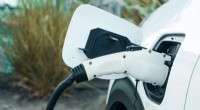
- Mensen of winst? Facebook-kranten tonen diepe conflicten binnen

 GAMBIT-project suggereert dat theoretische deeltjes te massief zijn voor LHC-detectie
GAMBIT-project suggereert dat theoretische deeltjes te massief zijn voor LHC-detectie Sponzen en koralen:beoordelingen van de zeebodem ter bescherming tegen klimaatverandering
Sponzen en koralen:beoordelingen van de zeebodem ter bescherming tegen klimaatverandering Nieuwe eDNA-technologie die wordt gebruikt om koraalriffen snel te beoordelen
Nieuwe eDNA-technologie die wordt gebruikt om koraalriffen snel te beoordelen Pre-blootstelling met helium remt de permeatie van waterstofisotopen in wandmaterialen
Pre-blootstelling met helium remt de permeatie van waterstofisotopen in wandmaterialen Nieuw onderzoek nodig naar milieu-impact van turbulentie van diepwater windparken
Nieuw onderzoek nodig naar milieu-impact van turbulentie van diepwater windparken Wat is Gibbs vrije energie?
Wat is Gibbs vrije energie?  Wat zijn de gassen die de ozonlaag beïnvloeden?
Wat zijn de gassen die de ozonlaag beïnvloeden?  Wetenschappers introduceren nieuw perspectief in robotvermogen
Wetenschappers introduceren nieuw perspectief in robotvermogen
- Elektronica
- Biologie
- Zonsverduistering
- Wiskunde
- French | Italian | Spanish | Portuguese | Swedish | German | Dutch | Danish | Norway |

-
Wetenschap © https://nl.scienceaq.com

